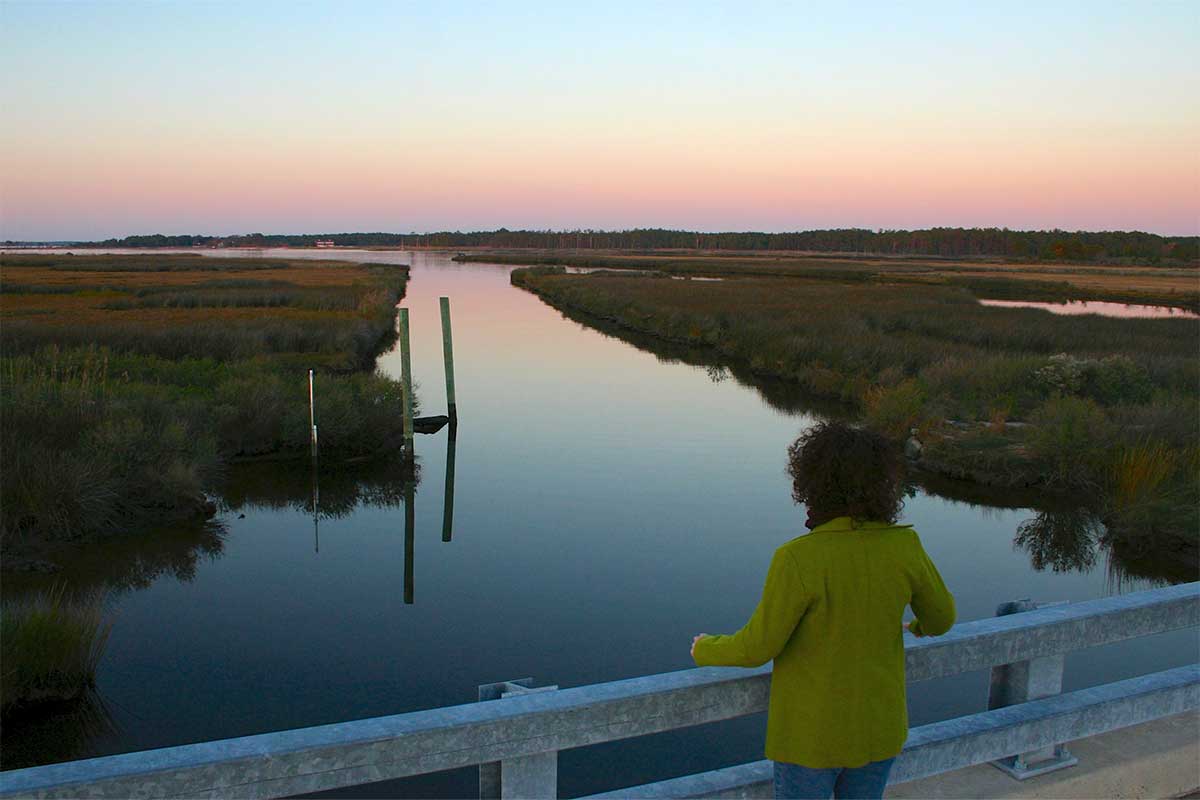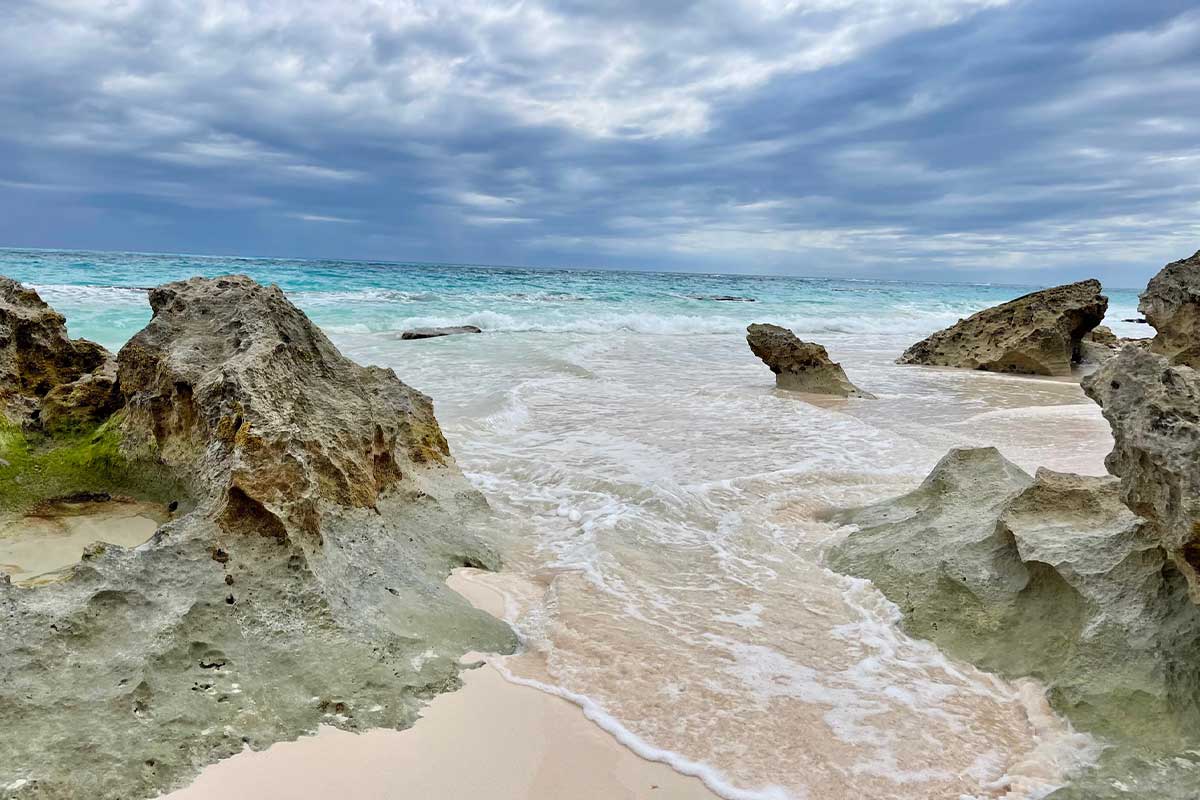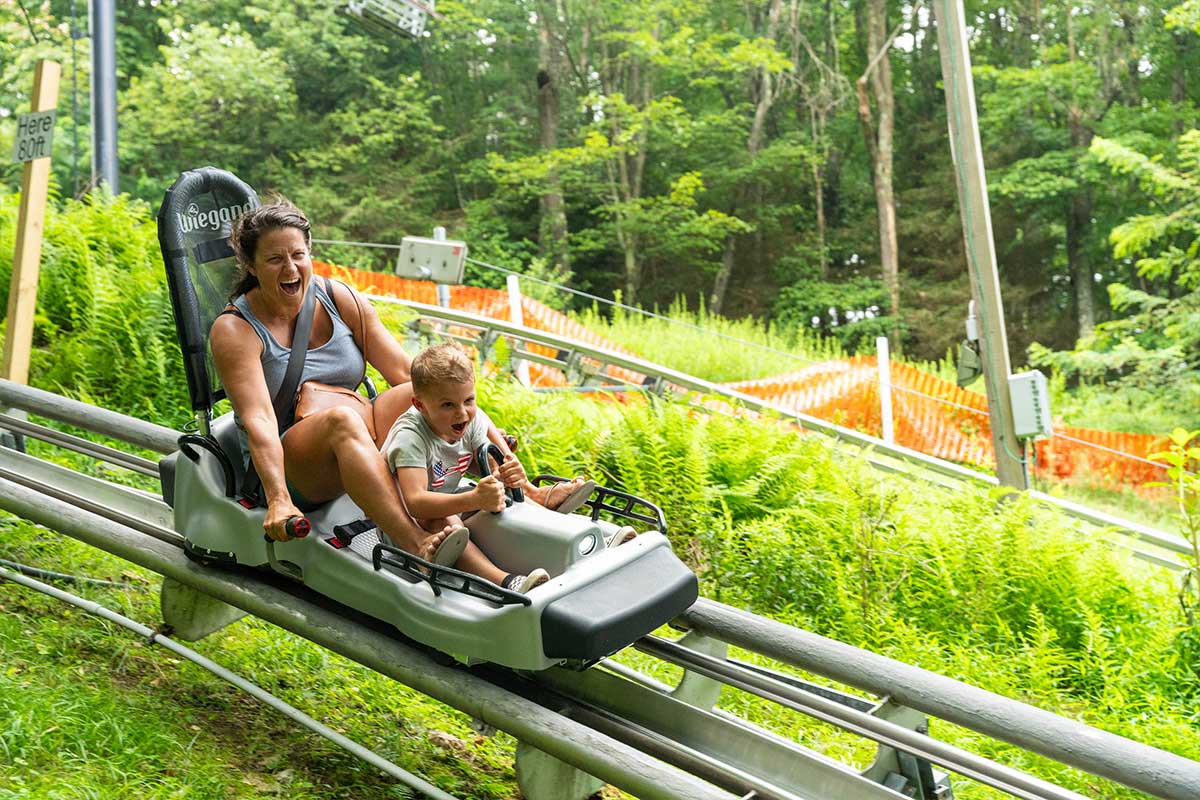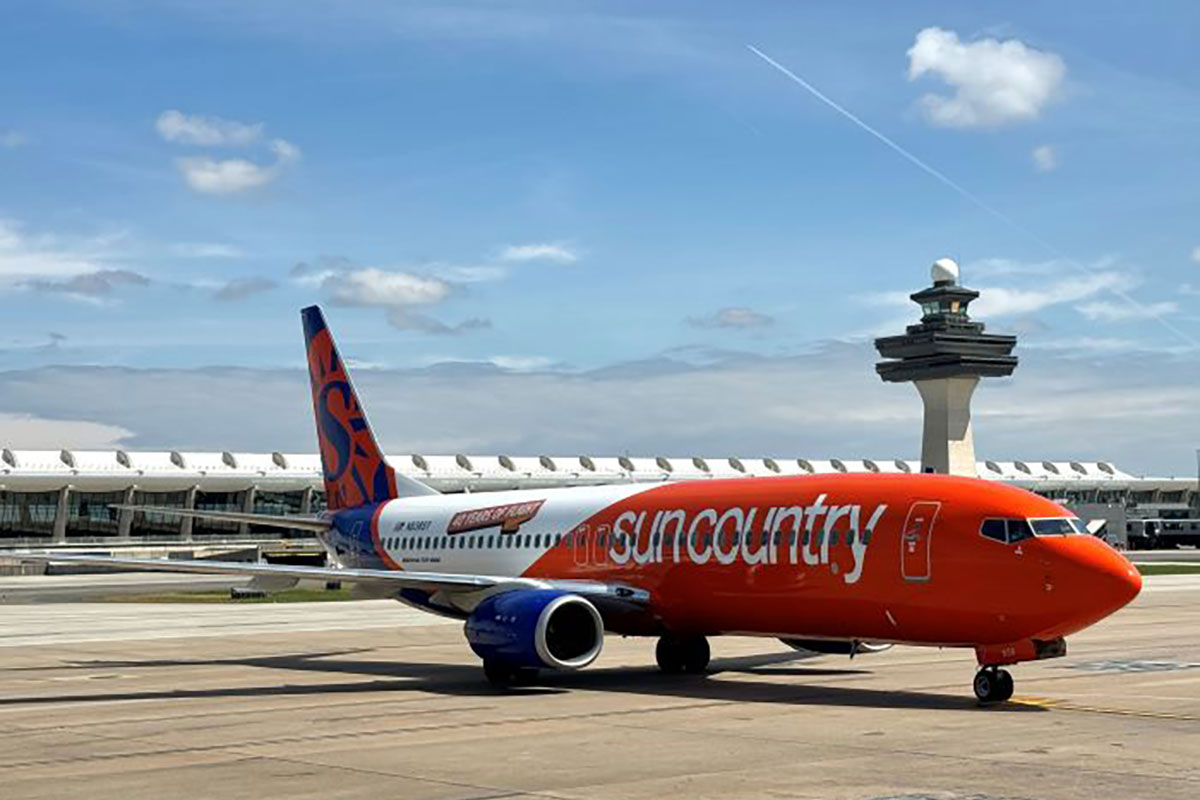The country roads leading to the Harriet Tubman Underground Railroad Visitor Center cut across shallow marshlands filled with cattails, scrubby pine, and cedar trees. Tubman traversed this landscape when she led 13 expeditions on the Underground Railroad, a secret network of safe houses and operatives who worked to emancipate enslaved people from the American South.
Located within the 32,000-acre Blackwater National Wildlife Refuge, the visitor center opens to a shadowy hallway made of reclaimed barnwood at the southern end of the building, with bright windows at the north end. “The view north is a symbolic theme throughout,” says Lawson Nwakudo, a park ranger. “The darkness symbolizes the South, then everything opens up and you’re met with light and space. That’s what freedom seekers would find after being liberated in the North.”
The visitor center is part of “Tubman Country” and is 7 miles from where her family was enslaved. The architecture incorporates cedarwood, the timber farmed by Tubman and her father.
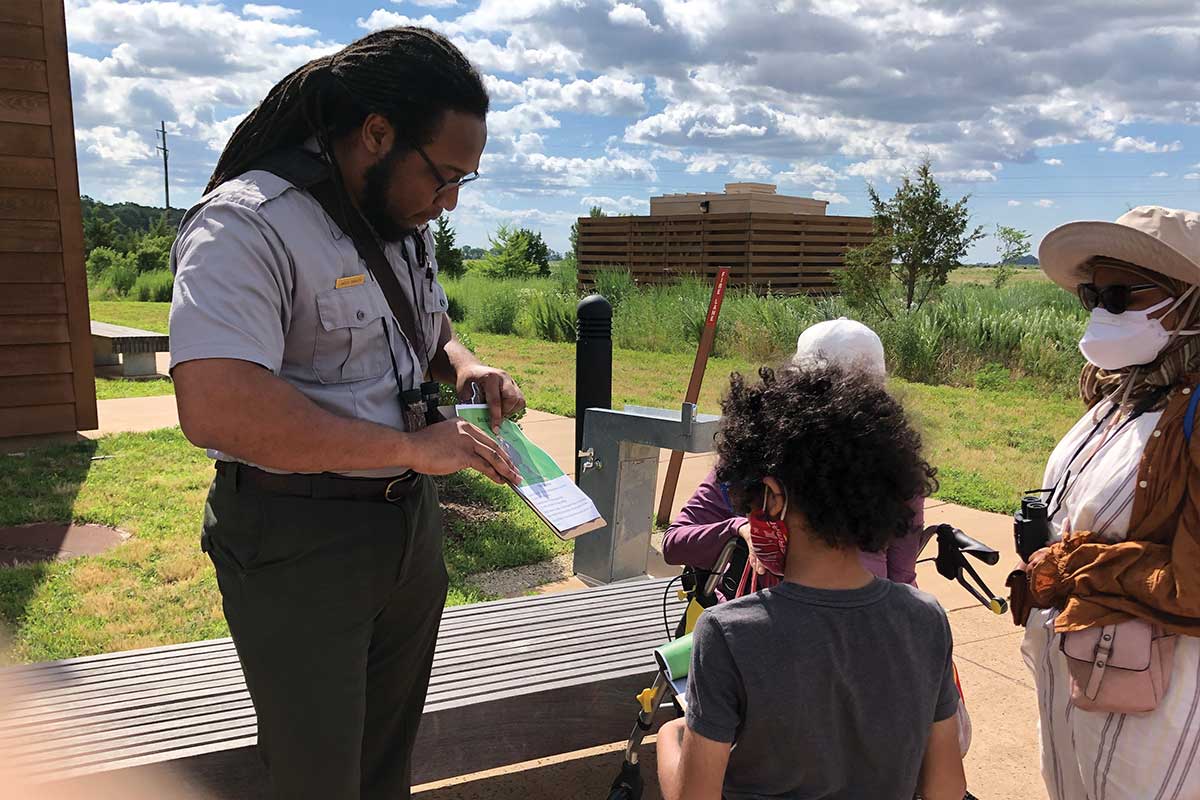
After watching a short film, visitors can view exhibits highlighting milestones in Tubman’s life with objects to touch, sound stations, and recreations of her heroism.
We see her as a young child, who never learned to read or write, caring for her infant brother. There’s a wrenching slave auction at the Dorchester County Courthouse, where three of Tubman’s sisters were sold. We learn of the assault that caused her head injury and subsequent “visions.” There’s a portrayal of Tubman hunting muskrats for food. “This 5-foot-tall woman was doing what she knew was right,” says Nwakudo.
Nwakudo recommends visiting the Legacy Garden, a three-quarter-mile meditative walk emulating Tubman’s footsteps. “It’s an untamed landscape that puts you in the mindset of freedom seekers moving through the wilderness.”
Frederick Douglass, the abolitionist who likewise spent his childhood enslaved on Maryland’s Eastern Shore, said of Tubman: “I know of no other person who willingly encountered more hardships to serve our enslaved people.” These stories and more make the trip to Dorchester County worth the drive. Harriet Tubman Underground Railroad National Historic Park: 4068 Golden HIll Rd., Church Creek, Maryland
Where to Eat
Located in Historic Downtown Cambridge is Art Bar 2.0, which is open for breakfast, lunch, and a weekly jazz brunch. 420 Race St., Cambridge
Where to Drink
Stop at RAR Brewing, located in an 80-year-old pool hall in downtown Cambridge. This rustic
brewhouse rotates its lineup of exemplary craft beers. 504 Poplar St., Cambridge
This story originally ran in our February issue. For more stories like this, subscribe to Northern Virginia Magazine.

